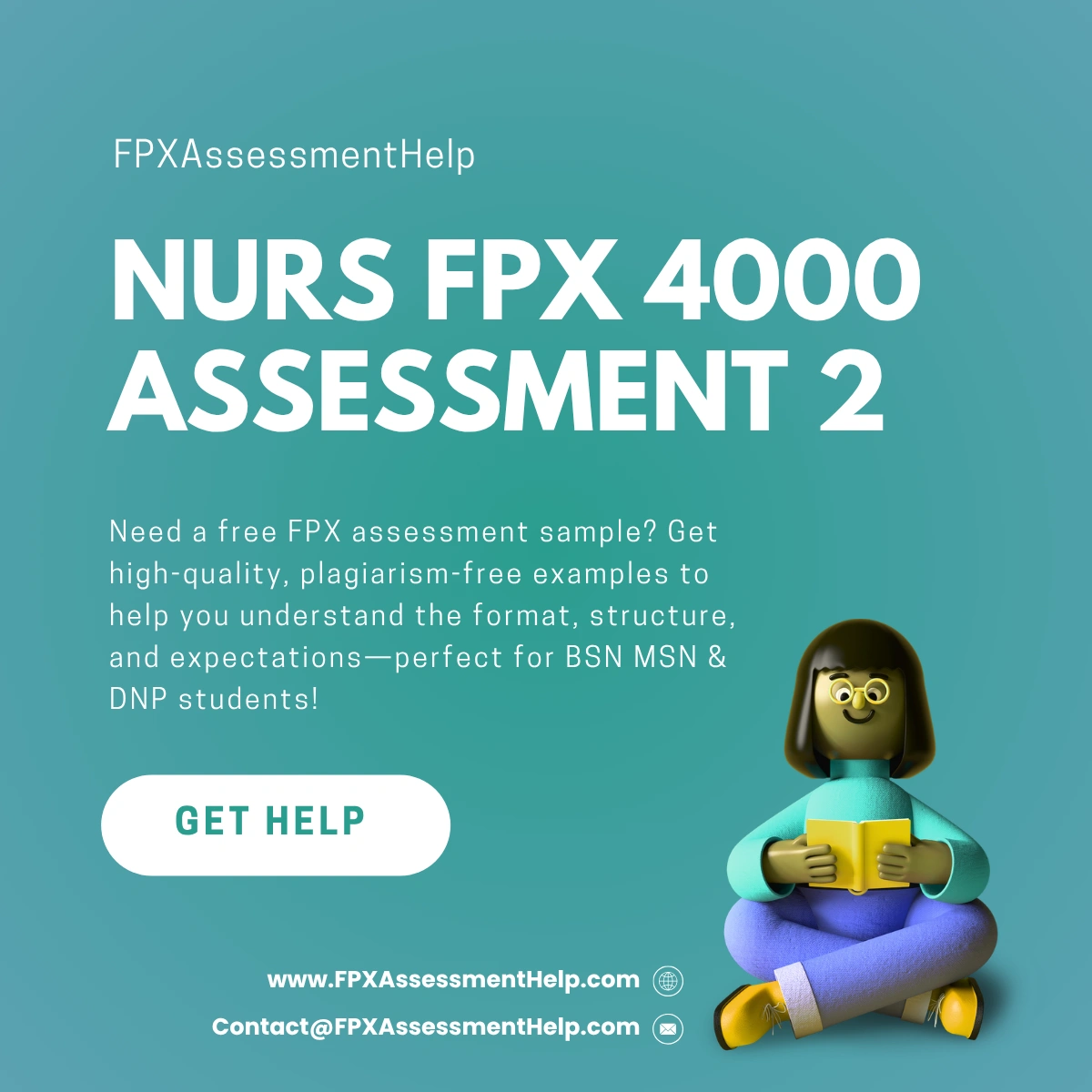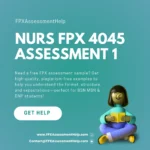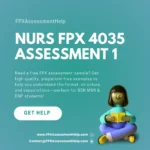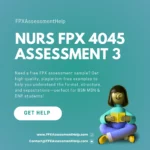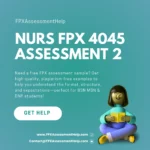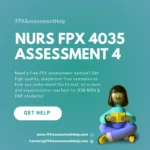NURS FPX 4000 Assessment 2 Applying Research Skills
Student Name
Capella University
NURS-FPX4000 Developing a Nursing Perspective
Prof. Name
Date
Applying Research Skills
Medication errors remain a pressing issue within healthcare systems, posing risks to both patient outcomes and institutional performance. These errors are preventable and often result from inappropriate or incorrect drug administration, whether due to miscommunication, distraction, or misinterpretation of prescriptions (Tariq & Scherbak, 2023). The implications are severe: in the United States, medication errors are responsible for approximately 50,000 to 100,000 deaths annually, positioning them as one of the top three causes of mortality (Dehvan et al., 2021).
During my nursing practice, I encountered a significant incident where I mistakenly administered metoclopramide instead of the prescribed metoprolol. The prescription was handwritten, and amidst a demanding shift and multiple clinical responsibilities, I misread the medication name. As a result, the patient experienced symptoms of tardive dyskinesia, including involuntary facial and tongue movements. Immediate intervention was necessary, including physician notification and corrective treatment. This event underscored the critical importance of precise medication administration and highlighted the need for healthcare practitioners to be trained in using evidence-based resources to minimize such preventable errors. Reflecting on this experience prompted me to explore peer-reviewed research focused on interventions aimed at reducing medication errors and safeguarding patient wellbeing.
Identifying and Evaluating Scholarly Resources
To investigate strategies that mitigate medication errors, I utilized several scholarly databases such as PubMed, ScienceDirect, CINAHL, Google Scholar, and the Capella University Library. Advanced search tools and Boolean operators enabled the narrowing down of relevant literature. Keywords included “medication errors,” “safe medication administration,” “barcode scanning,” and “clinical decision support.”
To ensure the reliability of selected sources, I applied the CRAAP criteria—a systematic method for evaluating academic integrity and relevance (Muis et al., 2022). The CRAAP framework helps assess information based on five key attributes:
| CRAAP Criteria | Application to Research Selection |
|---|---|
| Currency | All articles were published within the last five years. |
| Relevance | Each source directly addresses medication safety and error prevention. |
| Accuracy | Data and findings were evidence-based, supported by empirical analysis. |
| Authority | Authors held credentials in medicine, nursing, or pharmacology. |
| Purpose | Articles aimed at improving patient safety and reducing preventable errors. |
By ensuring that each article adhered to these standards, I was able to confidently select four journal articles that provided comprehensive insight into technological and communication-based interventions designed to address the issue.
Annotated Bibliography and Learnings
Annotated Bibliography
- Roumeliotis et al. (2019) This systematic review explored the effectiveness of electronic prescribing tools such as Computerized Physician Order Entry (CPOE) and Clinical Decision Support Systems (CDDS). Through extensive database searches, the study confirmed that electronic prescribing significantly decreased the incidence of prescription and dosing errors. Given the shift toward digital healthcare solutions, this article provided compelling evidence for hospitals to adopt electronic prescribing systems.
- Owens et al. (2020) This study evaluated the implementation of Barcode Medication Administration (BCMA) in an emergency department. Pre- and post-intervention data revealed a substantial drop in administration errors from 2.96% to 0.76%. Additionally, nursing staff reported increased job satisfaction. This source supports the integration of barcoding technologies to ensure accurate medication delivery while promoting a more efficient work environment.
- Rozenblum et al. (2020) The authors examined the application of machine learning technology—specifically MedAware—to identify and prevent prescribing errors. With nearly 80% of alerts deemed valid upon chart review, the software demonstrated a proactive approach in minimizing risk before errors occurred. This source is valuable in understanding how artificial intelligence can supplement traditional error-prevention systems while lowering related healthcare costs.
- Burgener (2020) This article emphasized the role of effective communication in reducing medication errors. It advocated for structured communication protocols and staff education programs, such as the Acknowledge-Introduce-Duration-Explain-Thank (AIDET) model. The study linked better communication with improved patient safety and satisfaction, reinforcing the value of human factors in clinical safety initiatives.
Learnings from Research
The process of reviewing academic literature reinforced the critical importance of integrating both technological and human-centered solutions in medication safety strategies. For instance, electronic prescribing minimizes transcription errors that often arise from paper-based documentation (Roumeliotis et al., 2019). Meanwhile, barcode scanning offers real-time verification, reducing the likelihood of administration mistakes (Owens et al., 2020). Emerging tools such as MedAware extend these safeguards through predictive analytics, identifying potential hazards before they materialize (Rozenblum et al., 2020). Beyond technology, fostering clear and structured communication practices through training and standardized protocols remains equally vital (Burgener, 2020). Overall, a multifaceted approach involving digital systems and interpersonal skills is essential for sustainable improvement in patient safety and reduction of medication-related harm.
References
Burgener, A. M. (2020). Enhancing communication to improve patient safety and to increase patient satisfaction. The Health Care Manager, 39(3), 128–132. https://doi.org/10.1097/hcm.0000000000000298
Dehvan, F., Dehkordi, A. H., Gheshlagh, R. G., & Kurdi, A. (2021). The prevalence of medication errors among nursing students: A systematic and meta-analysis study. International Journal of Preventive Medicine, 12(21), 21. https://doi.org/10.4103/ijpvm.IJPVM_418_19
NURS FPX 4000 Assessment 2 Applying Research Skills
Muis, K. R., Denton, C., & Dubé, A. (2022). Identifying CRAAP on the internet: A source evaluation intervention. Advances in Social Sciences Research Journal, 9(7), 239–265. https://doi.org/10.14738/assrj.97.12670
Owens, K., Palmore, M., Penoyer, D., & Viers, P. (2020). The effect of implementing bar-code medication administration in an emergency department on medication administration errors and nursing satisfaction. Journal of Emergency Nursing, 46(6), 884–891. https://doi.org/10.1016/j.jen.2020.07.004
Roumeliotis, N., Sniderman, J., Adams-Webber, T., Addo, N., Anand, V., Rochon, P., Taddio, A., & Parshuram, C. (2019). Effect of electronic prescribing strategies on medication error and harm in hospital: A systematic review and meta-analysis. Journal of General Internal Medicine, 34(10), 2210–2223. https://doi.org/10.1007/s11606-019-05236-8
Rozenblum, R., Rodriguez-Monguio, R., Volk, L. A., Forsythe, K. J., Myers, S., McGurrin, M., Williams, D. H., Bates, D. W., Schiff, G., & Seoane-Vazquez, E. (2020). Using a machine learning system to identify and prevent medication prescribing errors: A clinical and cost analysis evaluation. The Joint Commission Journal on Quality and Patient Safety, 46(1), 3–10. https://doi.org/10.1016/j.jcjq.2019.09.008
Tariq, R. A., & Scherbak, Y. (2023). Medication dispensing errors and prevention. National Library of Medicine; StatPearls Publishing. https://www.ncbi.nlm.nih.gov/books/NBK519065/
